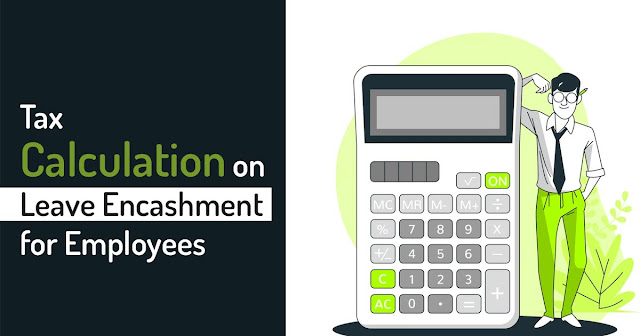Tax Calculation for Leave Encashment
Accumulated leave would either be encashed in the service time or during the time of retirement or resignation. Leave encashed in the service time comes under tax and makes part of the income from salary. But the relief beneath income tax section 89 would be claimed.
Leave encashment obtained during retirement/resignation is fully exempt for Central or State Government employees.
Leave encashment obtained by the non-government employee is exempt to the extent of lower of the mentioned below:
- Amount reported via Government- Rs 3 lakh
- Actual leave encashment amount
- The average salary for the last 10 months
- Salary per day x unutilized leave (considering a maximum of 30 days leave per year) for every year of completed service
The salary referred to above consists of the basic salary, dearness allowance, and commission based on a fixed percentage of turnover secured by the employee.
For example, Gopal resigned from the firm XYZ. His monthly salary is Rs 1.5 lakh. He was qualified for 30 days of leave per year. His leave balance during the time of his retirement is 20 leaves. His leave encashment of Rs 1 lakh.
Thus the privileged leave encashment would be lesser of:
- Amount reported via Government- Rs 3 lakh
- Actual leave encashment amount – Rs. 1 lakh
- Average salary of last 10 months – Rs. 15 lakh (Rs. 1.5 lakh x 10 months)
- Salary per day x unutilised leave (considering maximum 30 days leave per year) for every year of completed service – Rs. 1.5 lakh / 30 days = Rs. 5,000 per day x 20 days = Rs. 1 lakh
Thus the Total Leave Encashment of INR 1 Lakh Shall Get Privileged
- Amount circulated via Government- Rs. 2 lakh (Rs. 3 lakh less Rs. 1 lakh claimed exempt earlier)
- Actual leave encashment amount – Rs. 8 lakh
- Average salary of last 10 months – Rs. 24 lakh (Rs. 2.4 lakh x 10 months)
- Salary per day x unutilized leave (considering maximum 30 days leave per year) for every year of completed service – Rs. 2.4 lakh / 30 days = Rs. 8,000 per day x 100 days = Rs. 8 lakh
| Leave credits | 30 days |
| No of years of service | 10 days |
| Total leaves credit | 300 days |
| Leaves utilized | 60 days |
| Unutilised leave | 240 days |
The Exempt Leave Encashment Would Be Less Than
- Amount reported through the Government- Rs. 3 lakh
- Actual leave encashment amount – Rs. 8.7 lakh
- Average salary of last 10 months – Rs. 9 lakh (Rs. 90,000 x 10 months)
- Salary per day x unutilized leave (considering maximum 30 days leave per year) for every year of completed service – Rs. 90,000 / 30 days = Rs. 3,000 per day x 240 days = Rs. 7.2 lakh


Comments
Post a Comment